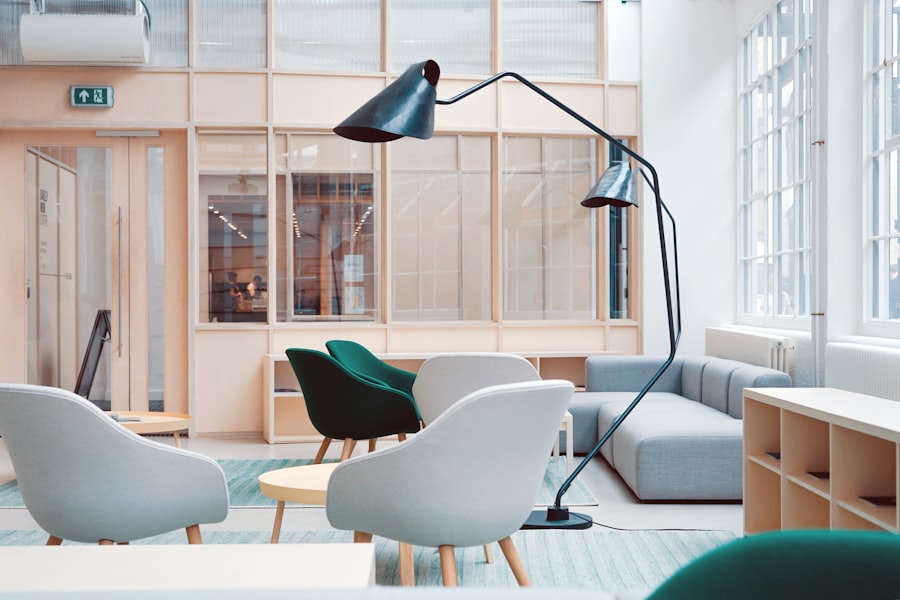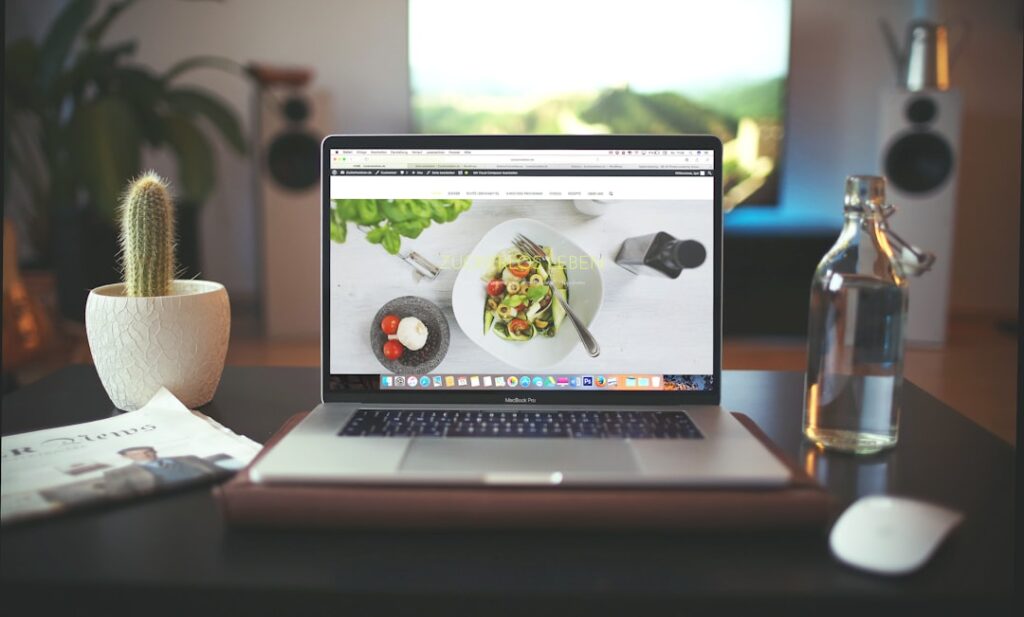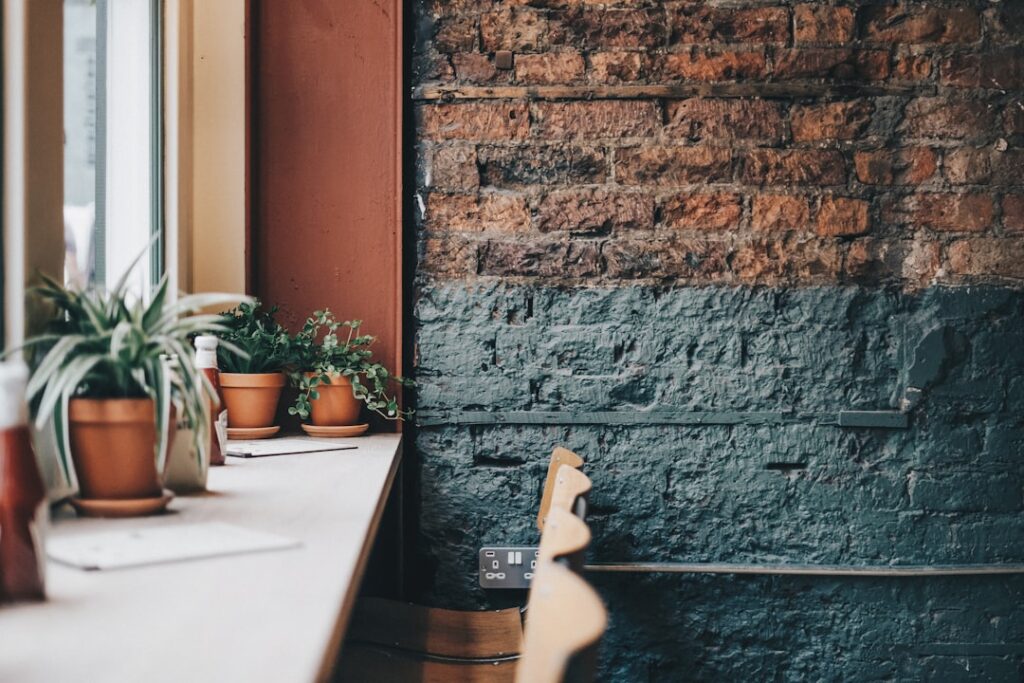A well-designed office space is more than just an aesthetic choice; it plays a crucial role in the overall productivity and morale of employees. Research has shown that the physical environment in which people work can significantly influence their performance, creativity, and job satisfaction. For instance, natural light, ergonomic furniture, and open spaces can enhance focus and reduce stress levels.
A thoughtfully designed office can foster collaboration among team members, encouraging spontaneous interactions that can lead to innovative ideas and solutions. Moreover, a well-organized workspace can minimize distractions, allowing employees to concentrate better on their tasks. Additionally, the design of an office space can reflect the values and mission of a company.
An inviting and professional environment can create a positive first impression for clients and visitors, reinforcing the brand’s image. Companies that invest in their office design often find that it not only attracts top talent but also retains existing employees who feel valued and comfortable in their work environment. The layout, color schemes, and furnishings all contribute to a sense of belonging and identity within the workplace, making it essential for organizations to prioritize thoughtful design in their office spaces.
Key Takeaways
- A well-designed office space is important for employee productivity and satisfaction
- Choose an interior designer who understands your company’s needs and culture
- Create a functional workspace by considering workflow and employee needs
- Incorporate brand identity and culture into office design to create a cohesive environment
- Utilize sustainable and eco-friendly design practices to promote a healthy work environment
How to Choose the Right Interior Designer for Your Office
Assessing Design Style and Expertise
Look for projects that demonstrate creativity, functionality, and an understanding of how to create spaces that enhance productivity. This will give you an idea of the designer’s capabilities and whether they can deliver a space that meets your needs.
Conducting Interviews and Evaluating Collaboration
Once you have shortlisted potential designers, it is vital to conduct interviews to gauge their approach to collaboration and communication. A successful partnership hinges on clear communication and mutual understanding of goals. Ask about their design process, timelines, and how they handle challenges that may arise during the project.
Ensuring Compliance and Streamlining the Process
Additionally, consider their familiarity with local building codes and regulations, as compliance is crucial for any renovation project. A designer who is well-versed in these aspects will help streamline the process and avoid potential setbacks. By taking the time to carefully evaluate potential designers, you can ensure that your office renovation project is completed on time, within budget, and meets your expectations.
Creating a Functional and Productive Workspace

Creating a functional workspace involves more than just arranging desks and chairs; it requires a strategic approach to layout and design that promotes efficiency and productivity. One effective method is to implement a zoning strategy, where different areas of the office are designated for specific activities. For example, collaborative spaces equipped with comfortable seating can encourage teamwork and brainstorming sessions, while quiet zones can provide employees with a place to focus on individual tasks without distractions.
This thoughtful division of space allows employees to choose environments that best suit their work style. Moreover, incorporating ergonomic furniture is essential for promoting employee well-being. Desks that can be adjusted for standing or sitting positions, along with chairs that provide proper lumbar support, can help reduce physical strain and discomfort during long working hours.
Additionally, integrating technology into the workspace—such as charging stations, high-speed internet access, and smart boards—can further enhance productivity by ensuring that employees have the tools they need at their fingertips. By prioritizing functionality in office design, companies can create an environment that not only supports but also enhances employee performance.
Incorporating Brand Identity and Culture into Office Design
The design of an office should serve as a reflection of the company’s brand identity and culture. This can be achieved through the careful selection of colors, materials, and decor that resonate with the organization’s values and mission. For instance, a tech startup may opt for a modern aesthetic with vibrant colors and innovative furniture designs to convey creativity and forward-thinking.
In contrast, a law firm might choose a more traditional approach with classic furnishings and muted tones to project professionalism and reliability. Incorporating elements of company culture into the design can also foster a sense of belonging among employees. This could include displaying artwork created by team members or featuring quotes from company leaders that inspire collaboration and innovation.
Additionally, creating communal spaces such as lounges or kitchens encourages social interaction among employees, reinforcing a sense of community within the workplace. By embedding brand identity into the office design, companies can create an environment that not only looks appealing but also resonates with employees on a deeper level.
Utilizing Sustainable and Eco-Friendly Design Practices
Sustainability has become an increasingly important consideration in office design as companies recognize their responsibility towards the environment. Utilizing eco-friendly materials such as reclaimed wood, recycled metal, or low-VOC paints can significantly reduce the environmental impact of an office renovation. Furthermore, incorporating energy-efficient lighting systems and appliances can lead to substantial cost savings over time while also minimizing energy consumption.
In addition to material choices, sustainable design practices can extend to the overall layout of the office. For example, maximizing natural light through strategically placed windows or skylights not only reduces reliance on artificial lighting but also creates a healthier work environment by improving air quality and employee well-being. Implementing green spaces such as indoor plants or living walls can further enhance air quality while providing aesthetic benefits.
By prioritizing sustainability in office design, companies not only contribute positively to the environment but also appeal to eco-conscious clients and employees.
Maximizing Space and Efficiency in Small Office Environments

In small office environments, maximizing space efficiency is paramount to creating a functional workspace. One effective strategy is to adopt a flexible layout that allows for easy reconfiguration based on changing needs. Modular furniture systems can be particularly beneficial in this regard, as they enable quick adjustments to accommodate different team sizes or project requirements without requiring extensive renovations.
Another approach is to utilize vertical space effectively by incorporating shelving units or wall-mounted storage solutions. This not only frees up valuable floor space but also helps keep the office organized and clutter-free. Additionally, multi-functional furniture—such as desks with built-in storage or conference tables that can be folded away—can significantly enhance the versatility of small workspaces.
By implementing these strategies, companies can create an efficient office environment that maximizes productivity without compromising on comfort or style.
Incorporating Technology and Modern Amenities into Office Design
The integration of technology into office design has become essential in today’s fast-paced business environment. Modern amenities such as high-speed internet access, video conferencing tools, and smart lighting systems are no longer optional; they are critical components of a functional workspace. When designing an office, it is important to consider how technology can enhance collaboration among team members.
For instance, incorporating interactive screens in meeting rooms allows for seamless presentations and brainstorming sessions. Moreover, creating designated tech zones equipped with charging stations and collaborative tools encourages employees to engage with technology in a way that enhances their workflow. The use of automation systems for lighting and climate control can also improve energy efficiency while providing employees with a comfortable working environment tailored to their preferences.
By thoughtfully integrating technology into office design, companies can create spaces that not only meet current needs but are also adaptable for future advancements.
Budgeting and Planning for Office Renovation Projects
Budgeting for an office renovation project requires careful planning and consideration of various factors that can influence costs. It is essential to establish a clear budget from the outset, taking into account not only design fees but also materials, labor costs, permits, and potential contingencies for unexpected expenses. Engaging with an experienced interior designer early in the process can provide valuable insights into realistic budgeting based on previous projects.
Additionally, prioritizing needs versus wants is crucial when allocating funds for different aspects of the renovation. For example, investing in high-quality ergonomic furniture may take precedence over decorative elements if employee comfort is a primary concern. It is also wise to consider phased renovations if budget constraints are significant; this approach allows companies to spread costs over time while still making necessary improvements to their workspace.
By adopting a strategic approach to budgeting and planning, organizations can ensure that their office renovation projects are both financially viable and aligned with their long-term goals.
Interior designers for office spaces may find inspiration in the article “Revolutionizing Workspaces with Modern Office Design”. This article discusses how modern office design can transform the way employees work and interact within a space. By incorporating innovative design elements and furniture solutions, interior designers can create functional and aesthetically pleasing office environments that enhance productivity and creativity. Additionally, designers may also want to explore the options for custom office furniture in Dubai to truly personalize and optimize the workspace.
FAQs
What is the role of an interior designer for office?
An interior designer for office is responsible for creating functional and aesthetically pleasing work environments. They consider factors such as space planning, furniture selection, lighting, and color schemes to enhance productivity and employee well-being.
What are the benefits of hiring an interior designer for office?
Hiring an interior designer for office can result in a more efficient use of space, improved employee morale, and a professional and polished appearance for clients and visitors. Additionally, a well-designed office can contribute to a positive company culture and brand image.
How do interior designers for office work with clients?
Interior designers for office typically start by meeting with clients to understand their needs, budget, and aesthetic preferences. They then create design proposals, present them to the client for feedback, and make revisions as necessary. Once the design is approved, the designer oversees the implementation of the project.
What qualifications should I look for in an interior designer for office?
When hiring an interior designer for office, look for someone with a degree in interior design or a related field, as well as relevant experience in commercial design. It’s also important to consider their portfolio, client testimonials, and any professional certifications they may hold.
How can I find the right interior designer for my office?
To find the right interior designer for your office, start by researching local designers and reviewing their portfolios. You can also ask for recommendations from colleagues or other businesses who have recently completed office renovations. It’s important to interview potential designers to ensure they understand your needs and vision for the space.


